© BD PERIPHERIQUE / BE IN OPEN / TEXTS ON FASHION ISSUE 1



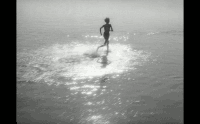



ON THE POTENTIAL OF LOCAL CULTURES
"THIS VAST COUNTRY IS GRADUALLY ACQUIRING ITS LOCAL STORIES, MYTHOLOGY, HIERARCHIES, AND MINOR INFRASTRUCTURES THAT ESTABLISH THESE HIERARCHIES AND SET THEIR OWN AGENDA"
TEXTS ON FASHION
We have interviewed Yuri Saprykin.
Yuri Saprykin is a Russian journalist, music and literary critic. He was one of the founders of the Afisha magazine, a leading Russian publication on contemporary culture. Yuri is currently engaged in the Polka educational project, dedicated to the main texts of Russian literature.
Yuri Saprykin is a Russian journalist, music and literary critic. He was one of the founders of the Afisha magazine, a leading Russian publication on contemporary culture. Yuri is currently engaged in the Polka educational project, dedicated to the main texts of Russian literature.
Have you passed that Meduza test (a popular Russian informational and analytical online resource) for knowledge of modern Russian culture?
No.
This test actually measures how well you know it. The questions refer to books, movies, TV shows, and music. For example: Have you heard the song Your Eyes by Loboda? Have you seen The Optimists series?
I have heard Loboda's song, and I have seen The Optimists series. Oddly enough, I am well acquainted with the commercial mainstream.
Which of the four blocks you would do best? Most people fail the books section.
I have a professional deformation. Over the past year that we spent working on the Polka project, I managed to pick up a lot of useless knowledge, so I am sure I will do fine with the books. And with the movies too. As for the series... I suppose I only saw The Optimists and The Thaw.
Who do you like most in each area of culture? Let's start with literature.
Maria Stepanova. I have long been considering her the best living writer in Russia. Masha is a wonderful poet and a remarkable essayist. Her texts about Susan Sontag, Alice Poret, The Noise of Time by Mandelstam, Vladimir Vysotsky and about anything else are always overwhelming. She is a top level essayist. She can create incredibly neat but deep masterpieces with limited words. Moreover, her novel In Memory of Memory, released late last year, demonstrated that, even with larger texts, Maria is also light years ahead of everyone else.
THIS IS AN INCREDIBLE BOOK, BOTH IN TERMS OF THE LANGUAGE, THE DEPTH OF THOUGHT, THE ORIGINALITY OF THE NON-LINEAR AND MULTIDIMENSIONAL STRUCTURE SHE USES AND OF THE INVOLVEMENT AND PASSION OF THE AUTHOR'S VOICE. I HAVE READ IT TWICE
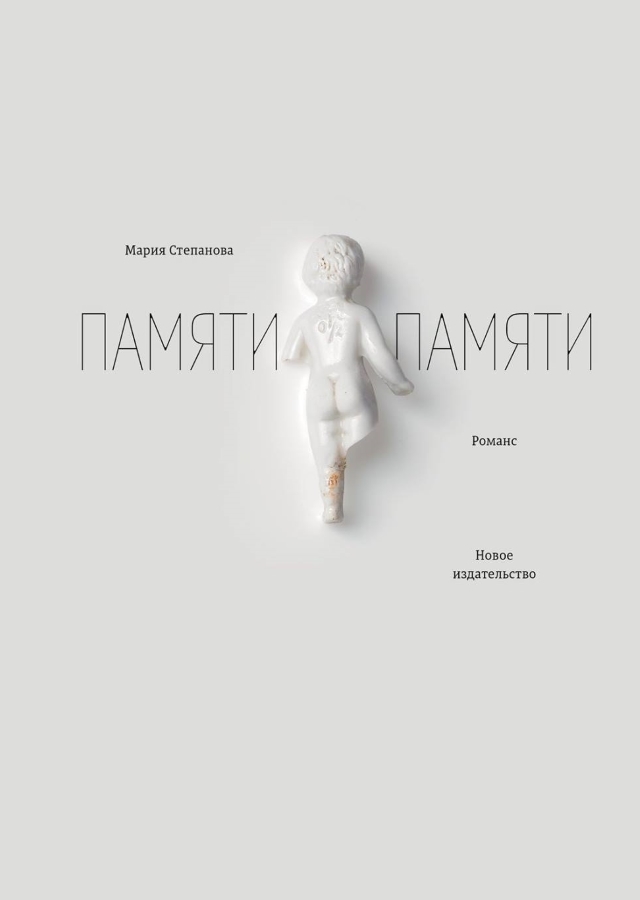
One day I woke up in the middle of the night in terror, realizing that I live nearby a truly great writer, who is also my good acquaintance. It is as if you sometimes meet for a cup of tea with your friend Anton Chekhov and then you suddenly realize: "Oh man, he is a great writer!" And you understand that these books will survive into future. It seems to me that Maria Stepanova is one of the truly great writers we are lucky to be contemporaries with.
And what about the cinema?
I really liked Tesnota by Kantemir Balagov. It is a wonderful film, devoid of many inherent clichés of the post-Soviet cinema, masterfully conceived, emotional and using a very modern language to speak of such deep things as our rootedness in emotional family affairs, the desire and the impossibility of escaping these affairs, love and support provided by this rootedness. This is a story of a family from a small Caucasian city, which may be easily extrapolated to anything, to the feelings of any person, no matter where he or she lives. In my opinion, it is also a very modern thing in terms of how masterfully it is done and what cinema language it employs.
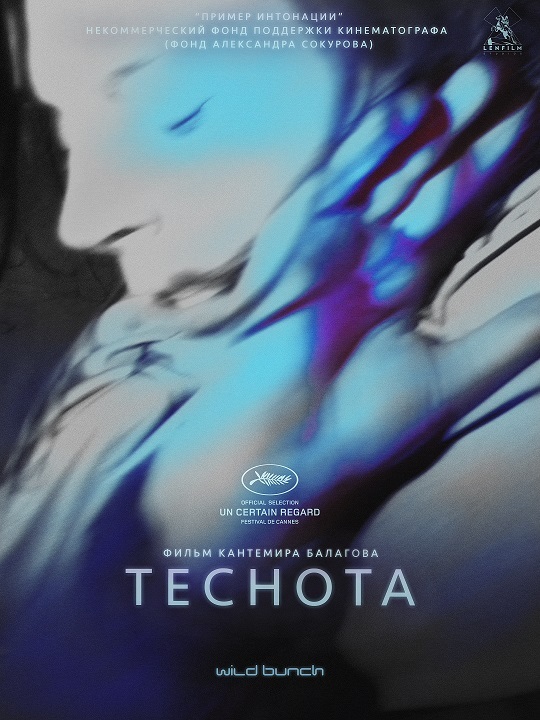









I am even more fascinated by his success story. A young man lives in Nalchik, studies at the college of the Ministry of Internal Affairs to become an accountant and can barely hope for anything more in life than a job as an accountant in a police agency. Suddenly, Alexander Sokurov, a famous film director, visits the city, assembles an art group and, two years later, the young man is in Cannes, walking the red carpet, sharing hugs with Colin Farrell. This is all simply amazing! Balagov is currently making a film based on War's Unwomanly Face by Svetlana Alexievich, with a big producer and a huge budget. This is almost like a Cinderella story.
Music?
Here, in contrast to the first two cases, I am almost alone in my preferences. The thing is I am a big fan of the St. Petersburg band Fivy. And it does not stop me that it has barely any other fans in the entire country. This is an amazing example of pop music. It is more interesting than Russian hip-hop, all fashionable young bands and the famous new singer Grechka. Five hundred times more interesting than all of them combined. This music is much closer to my heart. It resembles both the most bizarre Russian rock bands, like Auktyon or Kolibri, and the Gothic music of the 80s I am so deeply fond of. However, it is also very modern and fascinatingly strange, shrouded in some kind of an electronic mist. A very St. Petersburg thing in terms of its mood. These people broadcast the St. Petersburg cultural myth, perhaps unconsciously, on a number of very different levels, from the melodies and the choice of lyrics to the majestic Akhmatova intonation with which they sing. At the same time, it sounds more like Coil rather than an ancient Russian romance, which is just great.
And finally, the series.
I do not like TV series. I do watch something on occasion, but not more than that. Seven to ten years ago, the industry was ready for a breakthrough in the series segment and, in a sense, here it came. This type of art entered a brand new level and, in many ways, has become much more interesting than cinema. However, this breakthrough is limited to the times of Breaking Bad and Mad Men. Mad Men is a wonderful, beautiful series, with its obvious Chekhov's intonation expressed in the undertones and minor details, the sensation of the tension that has been building up so long finally bursting out, the feeling of the old life slipping away and the sadness it evokes. In my opinion, there have been no other breakthroughs like these. There are many nice things though. The Crown is cute, especially the second season. It features the youth of Elizabeth II, the first years of her marriage and reign. It is refined, very British and, at the same time, incredibly brave. As Mikhail Idov, an author of The Optimists series, wrote: "It is just as if a series was being filmed in Russia in which Lyudmila Putina unpacks her husband's luggage and finds a portrait of Alina Kabaeva." This would have been approximately the same degree of frankness, and yet, it does not cause any indignation, the feelings of the British are not violated. The royal family and everyone else watch the series without blinking.
Do you follow what happens in Russian regions?
Yes, I follow everything very closely, but I probably do not have enough time to watch and listen to everything on a professional level. However, when I go somewhere, I always try to find local experts to tell me where and what is interesting. It is now absolutely impossible to say that Moscow and St. Petersburg phenomena are better or more interesting than what is created in the regions. For example, the novel by Aleksey Salnikov there is this big fuss about right now, is it regional or is it not? It has more life and colour than any modern metropolitan prose. It was written in Yekaterinburg and published in a thick local magazine. If not for a few literary critics who grasped at it, no one would have known it existed, which looks like a mere matter of chance. And this is absolutely not a provincial book.
WHAT TIMOTHY RADYA, THE STREET ARTIST, IS DOING IN YEKATERINBURG IS NOT PROVINCIAL ART. THE SAME MAY BE SAID ABOUT 4 POSITIONS OF BRUNO, ALSO IN YEKATERINBURG. PERM HAS NEARLY THE BEST OPERA HOUSE IN THE WORLD! IT IS SIMPLY FANTASTIC. I WENT TO PERM TO SEE LA TRAVIATA AS DIRECTED BY ROBERT WILSON. IF ANYONE HAD TOLD ME FIVE YEARS AGO THAT THIS WOULD BE POSSIBLE, I WOULD NOT HAVE BELIEVED IT
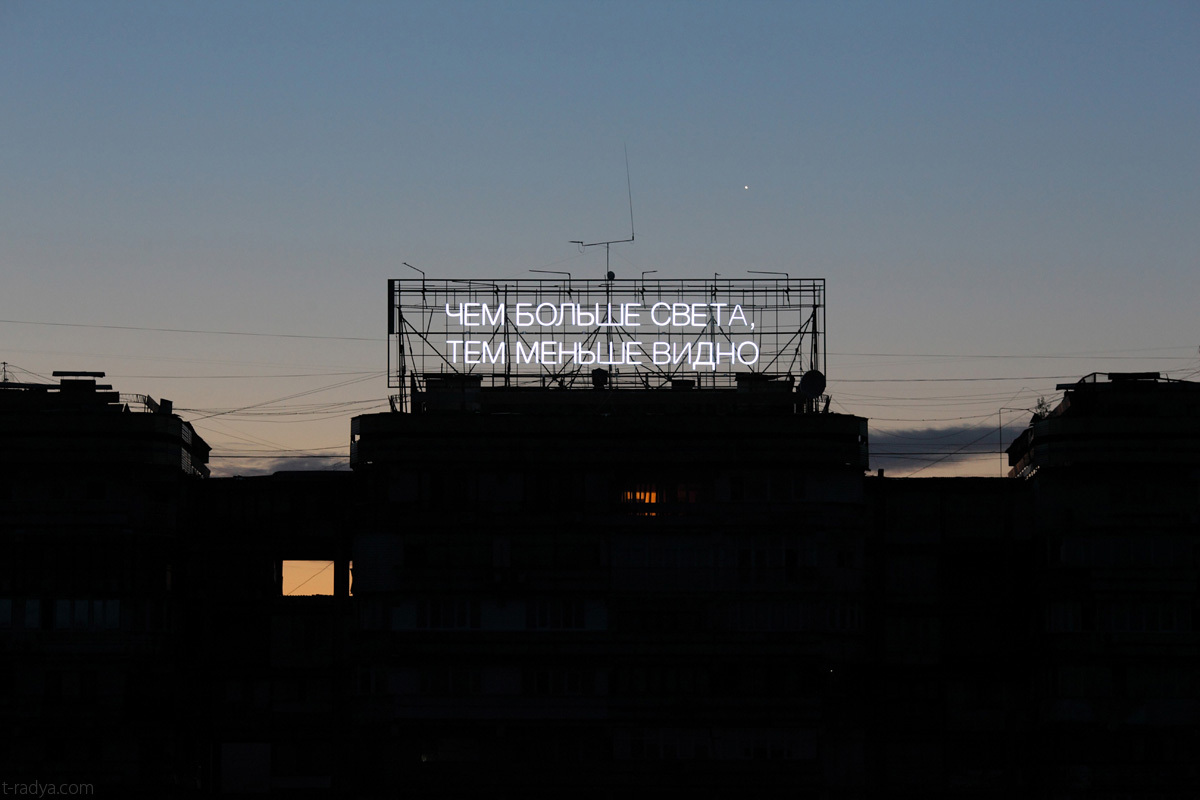
And still, it is much easier to make in such large cities as Yekaterinburg, Perm, or Novosibirsk, where there is well-established creative life. But what if we look at smaller cities?
Of course, it is also much easier to make in San Francisco or Chicago than in some Arizona wilderness. This is normal. In my opinion, it is essential that this development is no longer limited to Moscow alone. Previously, one had to make it in Moscow to become known outside his or her local region, but the situation has improved greatly. Everything that happens around local initiatives and those attempts to build local identities that originate at the local, rather than federal, level are all interesting, starting from local history to the creation of more or less independent local cultural institutions.
Why?
It is common for us to refer to the vertical of power and the authoritarianism that is inherent in Russia. However, this authoritarianism is not only manifested through the tsar sitting in Moscow and appointing officials. It may also be observed in the cultural sphere. There are a few decision-makers, represented, to the larger degree, by the state, followed by the federal media, which are all Moscow-based. They select the heroes to create their own system of cultural values. However, we suddenly find out this is not the only possible system, which, in my opinion, is wonderful.
This vast country is gradually acquiring its local stories, mythology, hierarchies, and minor infrastructures that establish these hierarchies and set their own agenda. It seems to me, that this makes people's lives more interesting, not only in Yekaterinburg or Perm, but universally. The fact that I know for sure that something incredibly interesting is happening in Kazan and Perm, which was not initiated by Moscow or brought in by Moscow promoters, adds perspective, colour and diversity to my life. It all warms my heart.
This vast country is gradually acquiring its local stories, mythology, hierarchies, and minor infrastructures that establish these hierarchies and set their own agenda. It seems to me, that this makes people's lives more interesting, not only in Yekaterinburg or Perm, but universally. The fact that I know for sure that something incredibly interesting is happening in Kazan and Perm, which was not initiated by Moscow or brought in by Moscow promoters, adds perspective, colour and diversity to my life. It all warms my heart.
Do you agree that, with the development in the cultural sphere, local citizen are becoming less embarrassed to talk about their identity?
I do not know. I cannot measure it. I am sure this is true for Yekaterinburg. You do not feel any provincialism left there. In Perm, despite the fact that the locals were somewhat dubious about the Marat Gelman's project of making Perm the "cultural capital" of Russia, after it all had collapsed, many young talented people left the city, because they felt like their only window of opportunity was shut closed. The life suddenly and abruptly became interesting, and then this new dimension to life was simply erased out of existence. However, there is still life there after the Gelman project — the Piotrovsky shop is still open and successful; the Opera House remains the best in the world. In general, there is a lot to see there, even though Perm is not the most joyful of cities. Even if they do not yet have their self-sufficient identity, it will develop eventually.
Roma Uvarov Design, photo by Turkina Faso, Roma Uvarov Design, Jahnkoy (SS19), HALF&HALF, Anastasiya Koshcheeva, M-U-R, Vetements (SS19), Ssanaya Tryapka, M-U-R
What can a single enthusiast do to improve the situation in a city or district? Write a song, publish a book?
You can see it yourself that there is no universal answer to this. One has to create what he or she has passion for. If I were some kind of a local boss, I would think of a modern way to tell people stories of the place they live in. Know and Love Your Motherland kind of posters and trending reconstructions of squares and parks with installation of wooden benches are not enough, though also important.
I will give an example. A year and a half ago I was giving lectures in California, in the city of Monterey. It is, of course, a much easier place to engage in local identity development: there is the ocean, seals lying along the shores, perfect weather all year round. I mean, the area is like a paradise. It is much more difficult to do the same in Perm. However, when you take a stroll in Monterey you keep encountering certain special details, which are not exactly monuments, but something else. You sit down on a bench and see a sign on it reading: "Here, Mr. Hewlett, the founder of Hewlett-Packard, loved to sit and watch the ocean. He fell in love with this view so much that he invested a lot of money and built a wonderful aquarium, which you can find a kilometre away from here. It has numerous unique marine animals." There is a Chinese diver monument, because, in the 20s, a huge Chinese colony lived here, who were all divers and ship repairmen. Without them, the Monterey port would not have become as great. Here is a drawing of some dudes on a wall. Who are they? These are characters of the Steinbeck's Cannery Row, and we, in fact, are on the Cannery Row Street. This was the home to a cannery where they processed fish, everything smelled of horse mackerel. The place was impossible to stay at, but it was the canned fish capital of America. There is the former location of the old oak, the sacred tree of the Indians, under which the Spanish navigators came up with the name Monterey. Almost every meter of the city is covered in such landmarks. There are no guides swarming around you; there is no state program for encouraging patriotism. It all works by itself. You walk through the city, and the city tells you stories of itself, making the journey interesting, creating a certain perspective. You begin to understand that it is not just houses, trees and cute seals, but there is something more hidden behind. And this is California, dating back to some 300 years ago. Why can't we do the same?
When I say "we" I certainly do not mean St. Petersburg. In St. Petersburg, everything is perfectly fine with local identity, local pride and awareness of the stories behind each stone. This awareness is transmitted by itself, without much effort on behalf of the state. However, it is quite different when you visit other cities. This, of course, may be explained by the upheavals of the XX century, when the history of a place could be erased together with its residents for several times. But this is past, and we have to live here in the present. Patriotism does not mean sitting and watching Vladimir Solovyov on TV, imagining our triumph over the United States. Patriotism is understanding the soul of the place you live in, knowing what stories, myths, and human fates it draws upon and how you can tell these stories.
I will give an example. A year and a half ago I was giving lectures in California, in the city of Monterey. It is, of course, a much easier place to engage in local identity development: there is the ocean, seals lying along the shores, perfect weather all year round. I mean, the area is like a paradise. It is much more difficult to do the same in Perm. However, when you take a stroll in Monterey you keep encountering certain special details, which are not exactly monuments, but something else. You sit down on a bench and see a sign on it reading: "Here, Mr. Hewlett, the founder of Hewlett-Packard, loved to sit and watch the ocean. He fell in love with this view so much that he invested a lot of money and built a wonderful aquarium, which you can find a kilometre away from here. It has numerous unique marine animals." There is a Chinese diver monument, because, in the 20s, a huge Chinese colony lived here, who were all divers and ship repairmen. Without them, the Monterey port would not have become as great. Here is a drawing of some dudes on a wall. Who are they? These are characters of the Steinbeck's Cannery Row, and we, in fact, are on the Cannery Row Street. This was the home to a cannery where they processed fish, everything smelled of horse mackerel. The place was impossible to stay at, but it was the canned fish capital of America. There is the former location of the old oak, the sacred tree of the Indians, under which the Spanish navigators came up with the name Monterey. Almost every meter of the city is covered in such landmarks. There are no guides swarming around you; there is no state program for encouraging patriotism. It all works by itself. You walk through the city, and the city tells you stories of itself, making the journey interesting, creating a certain perspective. You begin to understand that it is not just houses, trees and cute seals, but there is something more hidden behind. And this is California, dating back to some 300 years ago. Why can't we do the same?
When I say "we" I certainly do not mean St. Petersburg. In St. Petersburg, everything is perfectly fine with local identity, local pride and awareness of the stories behind each stone. This awareness is transmitted by itself, without much effort on behalf of the state. However, it is quite different when you visit other cities. This, of course, may be explained by the upheavals of the XX century, when the history of a place could be erased together with its residents for several times. But this is past, and we have to live here in the present. Patriotism does not mean sitting and watching Vladimir Solovyov on TV, imagining our triumph over the United States. Patriotism is understanding the soul of the place you live in, knowing what stories, myths, and human fates it draws upon and how you can tell these stories.

In your ideal program, patriotism would only be regarded as love for your local region, is it right? Without any nationalism.
The more local it is, the better. It is amazing when you can tell the story of the street or the house where you live or where you were born. In St. Petersburg, as I said, this is quite regular. In Moscow, local historian Dmitry Oparin has recently published a book on the house on Bolshaya Sadovaya, where Mikhail Bulgakov's apartment is located. It is nothing more but the history of a house, told by the different people who lived there. This is, in my opinion, a wonderful example. We do not need to speak about the entire Russia; we are all more or less aware that it is a generous soul and our sacred role. Tell me about that house, please. I want to know about that house, that bush, and this rock. And when I say "tell", this is not a request addressed to someone, this is rather an imperative: no one will do it, except us.
When we refer to modern culture, is it only represented by young people, deciding what is interesting? Or, are there examples of older generations involved?
Yes, of course, there are. These are not always separate people; these are often certain institutions that are established around such people. There is this story of the last year or the year before last involving the National Centre for Contemporary Arts, where the management was repeatedly replaced and taken in and out of ROSIZO. No one really cares about that, but for the regional branches of the NCCA, especially in Yekaterinburg and Nizhny Novgorod, the transformation of the parent organization is a rather dramatic event. The Nizhny Novgorod Arsenal and the Ural Industrial Biennale of Contemporary Art are the institutions that have significantly changed the situation in the cities. Therefore, it would be wrong to say that modern culture is developed by individuals or following private initiatives. You cannot just go and develop modern culture; write a novel, a song or a post on Facebook, and it will develop. Of course, this is not how it works. To a great extent, this is also institutional work.
EGOR LETOV, WHO, FROM MY POINT OF VIEW, LARGELY CREATED THE POST-SOVIET IDENTITY, IS A BRIGHT EXAMPLE OF A SUPER-TALENTED, SUPER-ENERGETIC PERSON WHO CAN DO EVERYTHING BY HIMSELF. HOWEVER, DESPITE THE FACT THAT, IN MOST CASES, HE WAS AN INSTITUTION HIMSELF, FOR SOME REASON, HE KEPT INVENTING BANDS AND LABELS. THIS WAS TO IMITATE AN INFRASTRUCTURE AROUND HIM AND TO PERIODICALLY DRAG VARIOUS PEOPLE INTO THIS INFRASTRUCTURE TO WORK FOR ITS BENEFIT
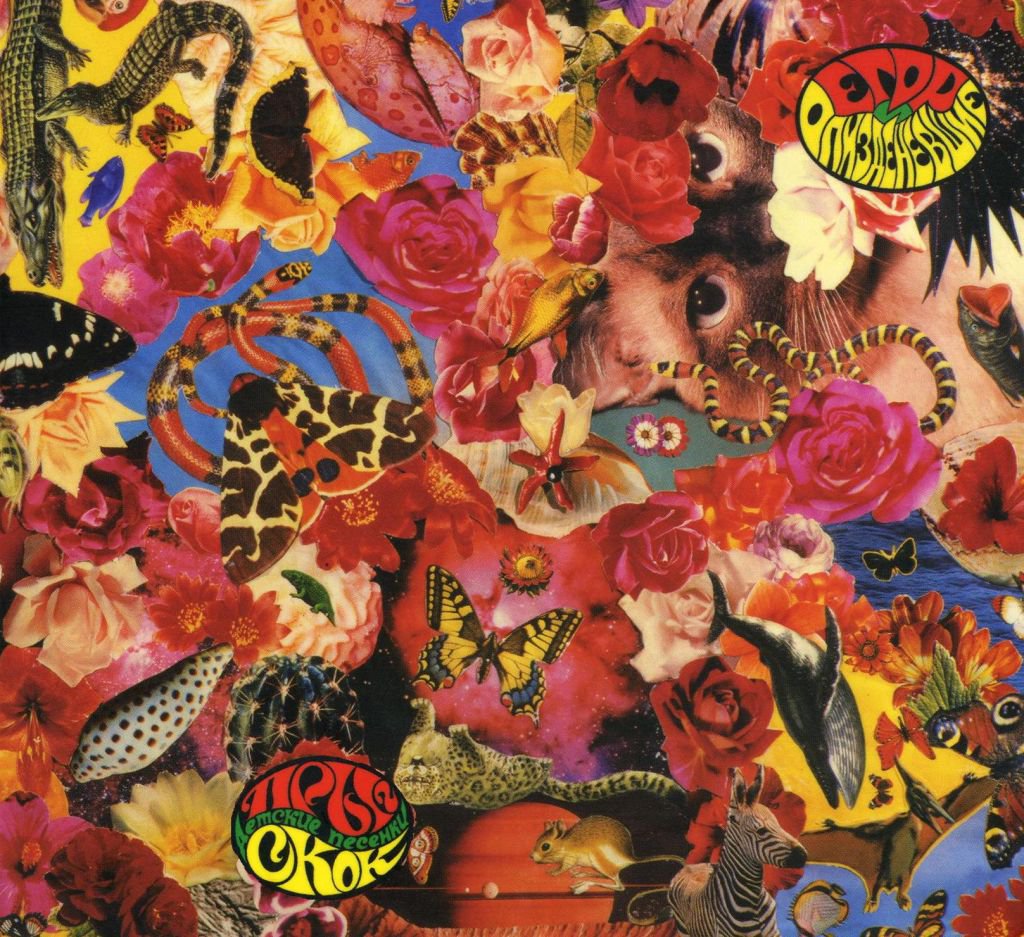
It is very rare for these things to be achieved by talented individuals. Much depends on them, but also much still depends on the structures built around or near them.
If we transfer this scheme to international relations, is it possible to say that a conditional West first became interested in the post-Soviet space as in a single entity and that it was only later that it started focusing on individual countries and cultures?
There was an important shift here, a change in perspective of those talented individuals in Eastern Europe. Option one: You live in Northern Chertanovo and it pains you, you keep trying to escape the place to some Shoreditch or any other fashionable region of any European capital. Option two: You live in Northern Chertanovo and at some point you realize that this is a terrible, inhospitable, uncomfortable place, compiled of cold, concrete, leaning buildings, but there is no other place like this; it is absolutely unique in this brutality and inconvenience, and these brutality and inconvenience do not make you want to run as far from it as possible, but make you proud of the place and make you want to hold yourself as the only and unique person from the fantastically brutal Northern Chertanovo.
In my opinion, there was a shift from option one to option two. All this provincial anguish from the fact that we live in a hole and the desire to escape this hole were replaced by an aesthetic re-evaluation of the attributes of this hole and their marketing to the outside world as something absolutely unique, fantastic, completely unmatched. This may be seen in fashion, photography, art and in cinema, in a sense. For example, there are Tesnota or Arrhythmia. The Romanians or the Poles have long lost any shame as regards their restlessness. On the contrary, they refer to it as to their unique national feature and stick it out.
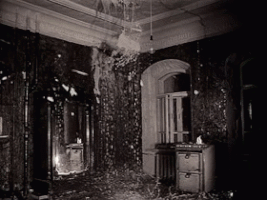
Probably, the political situation influenced this. I am talking about the New Cold War. The Cold War is always a very aesthetically beneficial time. Firstly, the enemy becomes interesting to everyone, and secondly, the atmosphere of tension, danger and brutality creates the noir aesthetics by itself, without any additional effort. You visit to the same Moscow in 2003 and in 2018, but in one case you see a messy, but vigorous city, and in the other case, you admire the powerful dark capital, the eye of Sauron, the empire that put its invisible hackers into all communications channels of the world. However, the city is the absolutely same. In 2018, it became even cosier and more comfortable than in 2003, but it is now perceived by many foreign visitors as the Sin City from the comic books.
It turns out that no one in Britain or in the USA is interested in your imitations of fashionable British music or Hollywood genres, since they have a lot of them back home. However, as soon as you start doing something drastically different, which uses the national mythology, aesthetics or identity of your country, your chances of success increase dramatically. And when it becomes massive, when a huge number of people suddenly enter the western market with their variations of the mythology of Northern Chertanovo, it all makes a pretty strong impression. Curators, journalists, and artists in the West fall in love with it, and suddenly Kanye West comes to visit Gosha Rubchinsky, and not vice versa.
And yet, even in a Cold War state, it is impossible to get out of the existing paradigm entirely and to make something completely different. Borrowing is still a thing. Of course, the conversation continues in a more or less single artistic language: everyone has brutal architecture, everyone has lowlifes, everyone has new dormitory areas and the street culture is more or less common for the entire European-American world. However, the devil is in the detail, and as soon as you start playing with the details, you open up interesting possibilities. These are not necessarily materialized. It is clear that if you print a burning White House or something else on T-shirts, it does not guarantee that Kanye West will come to visit you, he does not visit everyone. However, this will be a step in the right direction.
It turns out that no one in Britain or in the USA is interested in your imitations of fashionable British music or Hollywood genres, since they have a lot of them back home. However, as soon as you start doing something drastically different, which uses the national mythology, aesthetics or identity of your country, your chances of success increase dramatically. And when it becomes massive, when a huge number of people suddenly enter the western market with their variations of the mythology of Northern Chertanovo, it all makes a pretty strong impression. Curators, journalists, and artists in the West fall in love with it, and suddenly Kanye West comes to visit Gosha Rubchinsky, and not vice versa.
And yet, even in a Cold War state, it is impossible to get out of the existing paradigm entirely and to make something completely different. Borrowing is still a thing. Of course, the conversation continues in a more or less single artistic language: everyone has brutal architecture, everyone has lowlifes, everyone has new dormitory areas and the street culture is more or less common for the entire European-American world. However, the devil is in the detail, and as soon as you start playing with the details, you open up interesting possibilities. These are not necessarily materialized. It is clear that if you print a burning White House or something else on T-shirts, it does not guarantee that Kanye West will come to visit you, he does not visit everyone. However, this will be a step in the right direction.
IN ADDITION TO THE AESTHETICIZATION OF CHERTANOVO, NEW DORMITORY AREAS OR ANYTHING ELSE OF THE KIND, THERE IS AESTHETICIZATION OF THE 90S. THIS NEW YOUTH CULTURE RELIES HEAVILY ON THE 90S, ON THE EXPERIENCE OF THE FIRST POST-SOVIET YEARS. THIS IS MUCH IN CONTRAST TO THE OFFICIAL IDEOLOGY THAT REFERS TO THIS TIME AS TO SOMETHING ABSOLUTELY TERRIBLE AND DISASTROUS, SOMETHING THAT MUST NEVER RETURN
The state rhetoric may be reduced to the fact that we must not allow the collapse of the country, as it happened in the damned 90s. And in contrast to the mainstream, in the broad sense of the word, which simply tries to erase this period from memory, like the Chechen War never happened, and privatization never happened. All this is not in any way reflected in the culture; there are no books, no movies about this; this is not something you want to recollect, regardless of the attitude. However, for the new generation, this is a very important time, which has laid the foundations for certain contemporary codes, from the sports suits to Brat 2.This is why all modern cultural figures, from Rubchinsky to Dud, tend to refer to this period in one way or another and periodically try to re-tell some of its stories. And it is obvious how well this is received.
There are numerous projects dedicated to historical memory, but it is clear that, for this generation, historical memory is primarily about the 90s; this time has a magnetic halo. It is like the era of prohibition for the American cinema. For them, Perestroika is not interesting, neither is the Era of Stagnation. However, the 90s are still alive, still sore; they are an endless source of exciting stories and images.
There are numerous projects dedicated to historical memory, but it is clear that, for this generation, historical memory is primarily about the 90s; this time has a magnetic halo. It is like the era of prohibition for the American cinema. For them, Perestroika is not interesting, neither is the Era of Stagnation. However, the 90s are still alive, still sore; they are an endless source of exciting stories and images.
This is usually for commercial purposes, isn't it? After all, there are other social projects like Last Address, Then, 1917, and there are...
And there are, for example, Vetements. Very well! People strive to benefit financially from everything. I see nothing wrong in that they grasped the idea that was in the air. I just saw an absolutely wonderful discussion on Facebook over some boots displayed on the Vetements website, which, as the girls wrote in the comments, "look as if you are hurrying home from the Khovrino railway platform in the outskirts of Moscow through a park to the nearest high-rise building in 1995." That is, as if they are stained and smeared with mud. The only thing is that this mud is some gold plating and these boots cost 200,000 rubles. The gold plating description is written in very small print, visible only to a very careful reader; otherwise, these look like ragged boots, smeared with mud. This is just perfect! It is absurd, funny, strange, but beautiful too.
Can you make a prediction on what will happen next?
There is nothing I can say for sure. My predictive skills are very poor in this area. If someone had told ten years ago, at the time of hipsters, that the next big wave would be like this, I would not have believed it in a second. It seems that these are the same people, they go to the same clubs, communicate in the same language, they have the same pro-Western orientation. However, instead of trying to make the same cosmopolitan product as in other European capitals, they started working with our local codes. Ten years ago, I just was not able to imagine something like this. Nor am I now. It is clear that the next wave will deny this, but on which side? It may all turn to virtual reality and become surreal and psychedelic, denying not only this reliance on the legacy of the 90s or digging into the artefacts of Northern Chertanovo, but this reality as a whole. It would not surprise me at all. Some kind of super-escapism, with journeys through absolutely wonderful and unknown worlds. There is no linear relationship here, if we are now re-imagining the 90s does not necessarily mean the 2000s will follow. Unfortunately, there is nothing in the 2000s that could form such a base, as it was a time with no style. The 90s were the time of a trashy, dirty, gangster style, largely associated with disintegration and destruction, but still tangible; in the 2000s, there was nothing at all. Well, IKEA, yes. But it is not very romantic.
I'm worried about how all global trends resonate in the local context. Russian fashion magazines tend to publish ready-made articles written by their foreign colleagues and simply translated. That is, they describe what is happening in the same language, without any corrections for how it works in Russia, whether it happens here at all, and why we need to know it.
It pains me as much as it does you. I would really want to read a clever text on the latest Gucci and Balenciaga collections that impressed me deeply. I feel it is something extremely modern. It is all about that crazy aesthetics card that they play in different ways. But, sorry, I do not have the brains and cultural experience to put this in proper words. It may be probably referred to as "eclectic", but the term is so universal that it basically means nothing. This may all be due to the desire to counter the conventionally good taste and aestheticism through deliberate and bold mixing of everything with everything: the masculine with the feminine, the most incompatible colours, some things that may only be combined only if accidentally found in the garbage. A sort of a neo-vagrancy aesthetics. Again, this is only my speculation; I do not have the background to talk about this professionally. Unfortunately, I cannot find anything on this subject, except that chiffon and rainbow colours are trending this season. But the subject is very interesting! You see that these people have somehow caught the mood of the times. In a sense, they are all dressed like an old church beggar, but their clothes are of crazy colours and textures.
Manufacturers such as Gucci have established their hegemony in the common cultural field. Do you think this lead to the extinction of local culture?
I do not know. I decided for myself at some point that there were certain characteristics, very difficult to define, that make any piece of work absolutely Russian (laughs).These people from the Gucci shows, in their silly coats and coiled hats, they are Russians. I feel kindred with them. They may be unconsciously using some codes that I recognize as our native and local. The girls from the Chanel show, rustling autumn leaves when walking to garage rock music, are Russians. Нere is no doubt about this. Norwegian singer Susanne Sundfør, who sings terribly melancholic songs about depression, love and longing for love, she is Russian. All good things must be regarded as Russian, to be on the safe side.
Ssanaya Tryapka
Speaking more seriously, one of the things that struck me most in Russian art lately is the Satyagraha performance at the Yekaterinburg Opera Theatre. This is the first production of a Philip Glass opera in Russia, made by an Austrian conductor and a Czech director to the music of the American minimalist composer, with the text written in Sanskrit and telling the life story of Mahatma Gandhi. And still, this was definitely a Russian thing. It is impossible to explain why, but it is a perfect match. The curtain opens, you see Krishna and Arjuna sitting in their costumes and singing in their two voices an incredibly complex and consistent piece. And this music is like a ray of light, projected through time and space. I do not understand how to explain it. How is it created? I get tears in my eyes from how beautiful it is. And even the fact that Lev Tolstoy is among the characters in no way explains what is so Russian about the opera. There is some kind of a root system that joins all real things. This may considered a joke when we speak about Gucci, but I am absolutely serious when I speak about Satyagraha. This is the most Russian production of the most Russian opera in the world.
Still, if we return to global social issues in the Russian context, is it true that the development of the digital environment made all culture global and we can now easily integrate into the global discourse?
When you try to translate feminist or postcolonial discourse, which has matured in completely different conditions and at a much higher cost, using local realia and automatically applying the same approaches, the result is simply ridiculous. This does not mean that the discourse is wrong, silly or confirming the decline of the West. No, they suffered through it; you cannot simply take it and wear it like a Gucci coat. It needs to be relived in a way, interpreted, and fought through. This is not done through Facebook comments. And we will have to go through all this, of course. However, this will be a much more difficult and traumatic experience, not limited to groups of enthusiasts attacking other people on social media. Although this is probably also inevitable.
TEXT BY TANYA TRETYAKOVA